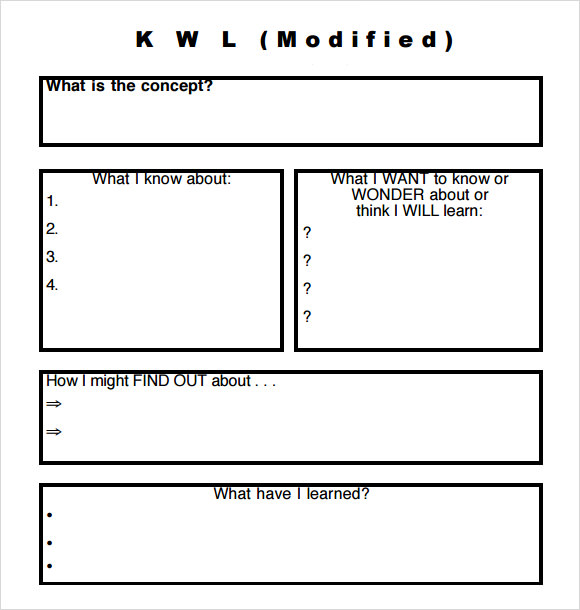The KWL chart is a popular educational tool that helps students organize their thoughts and knowledge on a particular topic. It stands for “Know, Want to know, Learned.” This chart is commonly used in classrooms to facilitate effective learning and critical thinking.
Free KWL Chart Templates
 One of the resources available for educators is a free KWL chart template offered here. This well-designed template provides a clear structure for students to record what they already know about a topic, what they want to know, and what they have learned. It can be downloaded in PDF or MS Word format for easy printing and customization.
One of the resources available for educators is a free KWL chart template offered here. This well-designed template provides a clear structure for students to record what they already know about a topic, what they want to know, and what they have learned. It can be downloaded in PDF or MS Word format for easy printing and customization.
Tim’s Printables KWL Chart Template
 Another useful resource is the KWL chart template provided by Tim’s Printables. The template is available for free here, and can be printed in PDF format. It features a simple and clean design, allowing students to easily fill in the information under the appropriate columns.
Another useful resource is the KWL chart template provided by Tim’s Printables. The template is available for free here, and can be printed in PDF format. It features a simple and clean design, allowing students to easily fill in the information under the appropriate columns.
Printable Stuff - Teaching
 Teachers looking for a visually appealing KWL chart template may find the one shared on Pinterest’s “Printable Stuff - Teaching” board appealing. The template, available here, features vibrant colors and creative imagery, which can help engage students and make their learning experience more enjoyable.
Teachers looking for a visually appealing KWL chart template may find the one shared on Pinterest’s “Printable Stuff - Teaching” board appealing. The template, available here, features vibrant colors and creative imagery, which can help engage students and make their learning experience more enjoyable.
Harnessing the Power of KWL Charts in Education
 KWL charts are a powerful educational tool that can significantly enhance students’ learning experience. They provide a structured format for students to organize their thoughts, identify knowledge gaps, and set learning goals. Additionally, KWL charts encourage critical thinking and active participation in the learning process.
KWL charts are a powerful educational tool that can significantly enhance students’ learning experience. They provide a structured format for students to organize their thoughts, identify knowledge gaps, and set learning goals. Additionally, KWL charts encourage critical thinking and active participation in the learning process.
The Benefits of KWL Charts
The benefits of using KWL charts in the classroom are numerous. They promote a sense of ownership and accountability, as students take responsibility for their learning by identifying their prior knowledge and setting learning goals. KWL charts also foster curiosity and engagement, as they allow students to express their interests and questions about a topic. By explicitly stating what they want to learn, students become actively involved in the learning process and develop a sense of purpose. Moreover, KWL charts facilitate information retention by providing a visual representation of students’ learning journey. By reflecting on what they have learned, students reinforce their knowledge and make connections between new and existing information.
In conclusion, KWL charts are a valuable tool that can enhance the learning experience for students. The provided templates and resources offer educators a variety of options to customize KWL charts according to their specific needs. By utilizing these charts in the classroom, educators can create a more engaging and effective learning environment while helping students develop critical thinking and organizational skills.